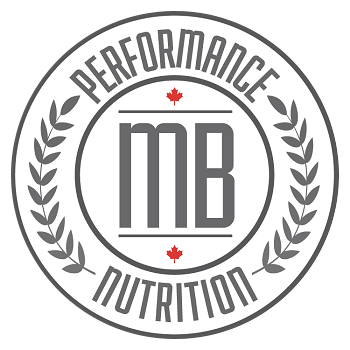Last updated on January 11th, 2024
Simple Nutrition and Lifestyle Habits Every Athlete Should Follow to Improve Performance, Health and Body Composition
They Make Time
Time management is the foundation to a healthy lifestyle and success as an athlete. If you are constantly saying “I am too busy” or “I don’t have time” as an excuse, everything else will fall off the rails.
Where are you struggling?
- Do you have a hard time committing to your goals and process?
- Do you feel guilty about making time for yourself?
- Do you neglect to use a calendar or reminders on a regularly basis?
- Do you feel overwhelmed by all the things you have to do?
A coach can help you set up a simple, basic system of calendars and reminders and show you how to organize your time. They can also help you list everything on your plate so you can start prioritizing and scaling back where needed.
They Eat Slowly
Eating slowly is a simple habit to understand, though it’s rarely an easy one to do. I’m guilty of eating while rushed, as I am sure you are too. Eating slowly can lead to eating less, feeling more in control of eating, as well as more mindful and aware. It can be done anywhere, anytime, with any food and in any situation.
Eating slowly will also benefit your digestive system. If you are eating while rushed and/or stressed, your digestive system won’t function optimally. If the stress-associated sympathetic system is on, it pushes blood away from the entire digestive tract, which compromises the function of both the stomach and intestines.
Here are a few simple tricks to slow you down:
- Set your utensils down between each bite
- Take a breath or two between bites
- Use an app or a timer and see if you can add a minute or two to each meal
- Eat without distractions (such as phone and TV)
They Stop Eating at 80% Full
Eating to “80% full” is not necessarily a specific number, but rather an idea. It means to eat until you are just satisfied or no longer hungry, but not full or stuffed. This is an important habit because it teaches appetite awareness, builds intuitive understanding and control of hunger and satiety and distinguishes between physical hunger and cravings.
This habit WILL be mentally, emotionally and physically uncomfortable. At first, you may not be able to feel stomach cues.
What are the signs of hunger, satiety and over-fullness?
- Hunger: headache, light-headedness, spaced out, feeling hangry, growling or empty-feeling stomach
- Over-fullness: feeling stuffed or bloated, heartburn, feeling nauseated or gassy, feeling heavy or sluggish
- Satiety: feeling energized and no longer hungry, feeling generally satisfied, feeling like you can get up from the table and do something other than pass out on the couch.
They Eat Lean Protein with Each Meal
Protein is necessary for almost every metabolic process in the body. As an athlete, getting enough protein will help preserve lean mass. It will also help you feel fuller, longer.
When I work with clients, I help them understand what foods are higher in protein, and I help plant-based eaters with high-protein options. I also ensure my clients are able to buy and prepare protein so that it is on hand, easily available.
A serving size for women is 1 palm. For men it is 1 to 2 palms.
They Eat at Least Five Servings of Colourful Vegetables/Fruit
Eating colourful vegetables and fruits adds variety and improves the nutritional quality of your diet. The fiber content will also help you feel more satiated. It doesn’t matter what specific foods you choose, as long as you get into the habit of eating the rainbow.
An approximate serving size for vegetables is 1 fist, while a serving of fruit is 1 cupped handful.
They Make Smart Carb Choices
As an endurance athlete, you will benefit from having carbohydrates in your diet. Low-carb is not ideal, and you will look, feel and perform better with some carbs. But, not all carbs are created equal.
Just because you workout, doesn’t mean you can eat absolutely anything you want. Slow-digesting, high-fiber, nutrient-rich carbs are a much smarter, nutritional choice and are not the same thing as processed sugars.
These include foods such as:
- Whole grains (brown or wild rice, quinoa, buckwheat, etc.)
- Beans and legumes
- Fruits and starchy vegetables (potatoes, sweet potatoes, bananas, etc.)
For women, 1 cupped handful is an approximate serving size. For men, it’s 1 to 2 cupped handfuls.
They Eat Healthy Fats
There are different types of fats, with different effects on the body. Healthy fats will help with hormone synthesis, recovery and other metabolic tasks. They will also help regulate appetite and satiety and make your food taste good. On the other hand, unhealthy fats will promote inflammation in your body, which can lead to a host of problems including inflammatory diseases, joint pain and injuries.
Women should include at least 1 thumb of fat per meal, while men should include at least 1 to 2 thumbs per meal, depending on their goals.
They Plan Well-Balanced Meals
Making healthy, performance-boosting meals take practice, planning and preparation. To do this consistently and well, you need to be able to take action and manage your time.
I don’t provide clients with meal templates because they typically don’t use them. Instead, I encourage clients to ask themselves questions to develop their own guidelines for creating nutritionist-approved meals such as:
- Will this meal improve my performance?
- Will this meal make me healthier?
- Will this meal help me eat slowly and feel full longer?
- Will this meal nourish me and make me feel good?
- Will this meal be enough to fuel me but not so much that is slows me down?
Instead of providing meal plans, I help clients get their portion sizing correct, I give them ideas for how to shop and prepare foods, I help them build a roster of foods they like and can easily make and I help them figure out the planning and prep process.
They Create and Use a Sleep Ritual
Everyone needs enough good quality sleep to be healthy and fit. As an athlete, this is especially important for your health, fitness, body composition, performance and recovery.
Ideally, you should be getting 7-9 hours of good quality sleep per night. But this habit is more about creating behaviours that facilitate good sleep, rather than aiming for a specific amount.
They Don’t Drink Their Calories
You usually won’t find elite athletes putting back a lot of alcohol, soft drinks, fruit juices, or high-calorie designer coffee drinks. That’s because most of these drinks don’t offer many nutrients or add value to our bodies. It’s also too easy to consume unwanted calories when they’re in liquid form.
By drinking calorie-free beverages more often (water and herbal tea), you can automatically improve your nutrition and cut out excess calorie intake. And no, this doesn’t mean consuming diet drinks that are “zero calories” because they are full of artificial sweeteners instead.
They Use a Targeted Recovery Strategy
Your body doesn’t get better, fitter or leaner during your workout. It gets better between workouts, as you rebuild and recover. This recovery doesn’t happen by accident either. Especially as an athlete, with a busy schedule, recovery often gets neglected.
It’s important to get in the habit of recovering, replenishing, rebuilding and filling up your body’s bank account more often and more holistically.
Recovery activities can include:
- Gentle movement
- Stretching
- Extra sleep
- Bath with Epsom salt and essential oils
- Good nutrition habits
- Using a BCAA supplement
They Eat Whole Foods Most of the Time
While I don’t like to impose hard-and-fast rules, clients are encouraged to consume more whole foods and be critical consumers when it comes to deciphering “natural” and “organic” labels. As often as possible, foods should be minimally processed, or “closer to the ground”.
Whole foods can include:
- Fresh vegetables and fruits
- Whole grains, beans and legumes
- Minimally processed lean protein
- Nuts and seeds
- Minimally processed canned tomatoes
- Bagged frozen shrimp
- Frozen vegetables and fruits
I work with clients to figure out which foods are whole and which are processed, and I provide them with simple substitutions for processed foods.
These habits are all part of my 12-month online nutrition and lifestyle program. You see, I am a Precision Nutrition ProCoach.
Over the past 15 years, Precision Nutrition has used this program to help more than 45,000 clients lose 900,000 pounds of body fat and get in the best shape of their lives. These lasting transformations come from proven, research-driven methods NOT DIETING.


